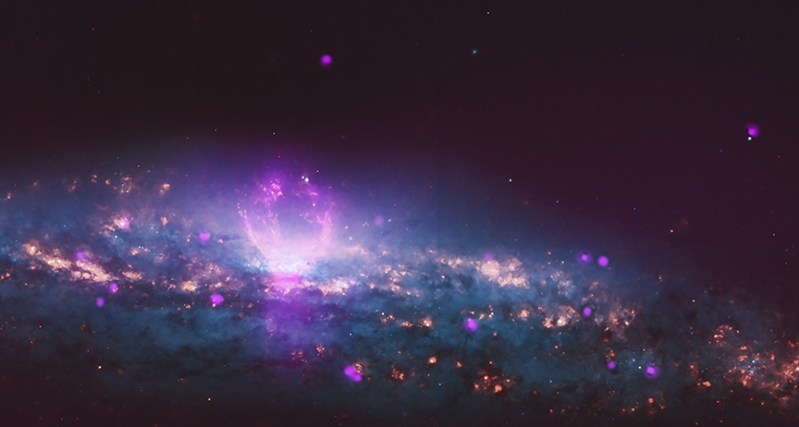Check Out These Giant Pair Of Superbubbles In NASA's Photo
Indira Datta - Mar 20, 2019

A photo provided by NASA shows a pair of “nuclear superbubbles,” one over 4,900 light-years across and the other over 3,500 light-years.
- The First Space Hotel In The World Will Welcome 400 Guests
- Startup Builds Vehicle With Soviets Tech To Collect Space Garbage
- Russia Will Build A Lunar Space Station With China Because It's Done With NASA
A photo from NASA gives a very clear view of a pair of enormous bubbles with one is 3,500 light-years across, and other is more than 4,900 light-years wide. They emerge from the galaxy NGC 3079, probably after a central black hole taking in matter and emitting it back out.
But it is also possible that superbubbles originate from a starburst, which is a faster-than-usual stellar birth. Compression in the cooler gas and shock waves are what might have created their bubble-like shape. However, the unexplainable part of this is that while the smaller bubble appears to emit synchrotrons or high-energy x-rays from its spiral electrons, the larger one doesn't

These bubbles might carry with them high-energy particles known as cosmic rays which strike Earth from space. According to a study published in The Astrophysical Journal, they might even be the place where those cosmic rays with too high energy to be speed up by one single supernova located. The x-rays' locations and their energies suggest that the occurrence of particle acceleration is at the bubble's outer rim, instead of the galaxy's center.
To get this picture, researchers have to combine all the results of nearly 36 hours of observation through 4 observations since 2001 at the Chandra X-ray Observatory.

If you look directly at NGC 3079 with your eyes, you will not be able to see what is displayed on this photo. The image is a combination of 35 observation hours. The frequencies of x-ray from Chandra are rendered in pink and purple. Blue and red are used to render the frequencies of visible light captured by Hubble. This is the typical process that these kinds of space photos go through.
Researchers can determine the location from which the high-energy emission come from. However, we still have many unanswered questions, such as the bubble emitting the synchrotron from the bottom but not the top. If we find the answer to these questions, we can get deeper insights into the origin of their formation. How can we figure out these answers? It all depends on future telescope campaigns.
Featured Stories

Features - Jul 01, 2025
What Are The Fastest Passenger Vehicles Ever Created?

Features - Jun 25, 2025
Japan Hydrogen Breakthrough: Scientists Crack the Clean Energy Code with...

ICT News - Jun 25, 2025
AI Intimidation Tactics: CEOs Turn Flawed Technology Into Employee Fear Machine

Review - Jun 25, 2025
Windows 11 Problems: Is Microsoft's "Best" OS Actually Getting Worse?

Features - Jun 22, 2025
Telegram Founder Pavel Durov Plans to Split $14 Billion Fortune Among 106 Children

ICT News - Jun 22, 2025
Neuralink Telepathy Chip Enables Quadriplegic Rob Greiner to Control Games with...

Features - Jun 21, 2025
This Over $100 Bottle Has Nothing But Fresh Air Inside

Features - Jun 18, 2025
Best Mobile VPN Apps for Gaming 2025: Complete Guide

Features - Jun 18, 2025
A Math Formula Tells Us How Long Everything Will Live

Features - Jun 16, 2025
Comments
Sort by Newest | Popular